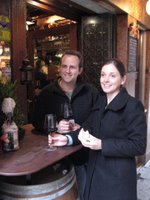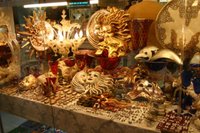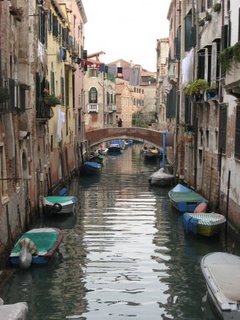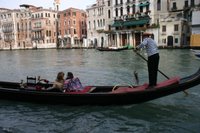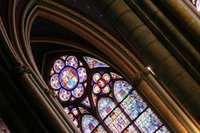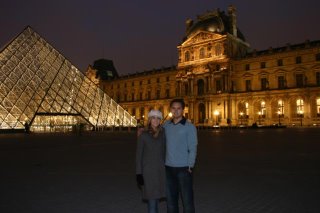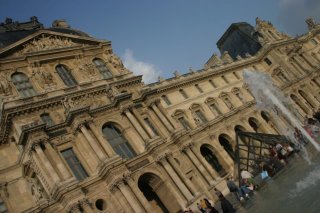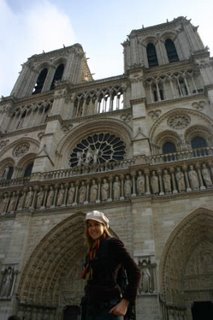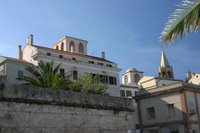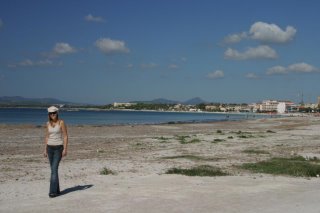
Wanting to make the most of the last days of summer, we decided to go and check out Warwick after hearing about Warwick Castle from friends. Statford-Upon-Avon, the birth place of Shakespeare is only 8 miles from Warwick so we opted to make a weekend of it, with Jacinda joining us.
As expected, Warwick Castle was great. The castle was bigger than I expected and was set on 60 acres of beautifully landscaped gardens (designed by Lancelot Brown in 1753) featuring a peacock garden complete with several live peacocks roaming around. The castle is in remarkable condition considering most of it was built in the 14th Century. It’s owned by the Tussauds, evident in the wax figures populating the different areas of the castle- including Henry VIII and his 6 wives – they must’ve married him for his money because the short rotund King was no looker! Other parts of the castle featured wax armourers making chainmail and arrows, ladies in the washhouse and the 19th Century grandeur of the great hall and state rooms. You can understand why the doors are so low in the 16th Century houses because if the wax figures were true to life – people were really short. The small dungeon with it’s stocks and underground pit and adjacent torture chamber were pretty creepy.
The short but entertaining ‘Ghosts Alive’ tour was interesting. In a dark creepy part of the castle with haunting music playing in the background, costumed actors told the story of a past inhabitant of the castle – Sir Fulke Greville who was stabbed by his manservant and left to die in his bedchamber for 27 days before he dies. The manservant then consumed with guilt, kills himself. The actors were hiding behind doors and a white-faced witch or ghost would jump out at you at every opportunity. Once Jacinda and I were established as the screamers of the group, we were chosen as the victims. I can see why the little boy at the exit was crying!

The castle also had a couple of shows that we checked out. The first was all about the trebuchet -like a giant catapult – a weapon of mass destruction as the guide described it. We got to see the worlds biggest (18 metres tall and weighing 22 tonne) trebuchet in action. Apparently capable of shooting amo of up to a few tonnes 250 metres, we saw a rock of probably 10kg slung across the field. The history lesson that went with this display was pretty interesting. The trebuechet is powered by 4 men running inside 2 giant wheels – like giant versions of the wheels you put in mouse cages. Apparently this was hard muscle-aching work and the light coming through planks of wood would cause motion sickness which could be fatal as if you slipped on your own vomit you could fall and break your back on the axel of the wheel. The answer to this? Putting blind men on the wheel. They even had some novel ammunition in medieval times. When armoured soldiers were coming towards you, catapult beehives at them so the bees get under the armour and sting the soldiers and they then remove their armour to swat at them. Or in times of drawn out sieges rotten maggoty pigs might be slung over the walls in the hope of it infecting the water supply.
The other show was the Birds of Prey where an Eagle, Owl and hideously ugly Vulture swooped around the castle in an impressive display of falconry.
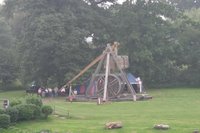
The towers and ramparts had several flights of narrow dark spiralled staircases with a great view of Warwick from the top. You would expect it to be great after climbing 550 steps to get there! (That’s not an exaggeration, it was written on the sign).
After soaking in all the sites of the castle and deciding that the sleepy town of Warwick didn’t offer much else in the way of attractions, we headed to Stratford. It seems that the whole town exists simply because of its links with Shakespeare but it was still a great place full of 16th century establishments oozing character. We bought a pass to see all 5 of the Shakespearean houses and started with the most popular – Shakespeare’s birth place – where we walked on the same stone floor as Willy did some 400 years ago. The house must have been a smelly one as Williams father was a glove maker and they would bring the animals right up to the house for slaughtering then soak the skins in urine. A pair of handmade goat skin gloves would cost ¼ of the average salary so the Shakespeare’s were quite well off and to show off their wealth their fancy bed was displayed right by the road window on the ground floor – the 16th century equivalent of parking your

Mercedes outside the garage. The children’s beds didn’t look too comfortable – a simple woven mat held taut in a low wooden frame by ropes. The ropes would be periodically tightened otherwise you would end up on the floor – that is how the saying ‘sleep tight’ came from.
Shakespeare’s house began to be a tourist attraction in the 1800s and interestingly, the visitor’s book (which included Charles Dickens) and graffitied window from when the house first opened are now features of their own.
Thanks to some advice from one of Jacinda’s friends who’s Dad grew up in the area, we headed to the Dirty Duck, a pretty, riverside cubby hole of a pub across the road from the Shakespeare theatres. The walls were full of photographs of famous actors and celebrities who had visited in years gone by. The food was fantastic and we spent a few hours just soaking in the English atmosphere before heading back to our B&B in Warwick. We took a night speed-bus back where the driver was obviously trying to beat her own record or maybe just wanted to make it home in time to catch Big Brother. The journey that took 50 minutes that afternoon took only 15 on the way back (obviously the afternoon bus must have taken the long route)

The next morning we were greeted by blue skies and the smell of bacon. The host must have been surprised to see me and Jacinda’s order of yoghurt, muesli, orange juice, a bacon baguette, bread rolls cheese and meats. The bacon baguettes were for Warren and we took the bread rolls for lunch – hehe! Knowing that the buses between Warwick and Statford weren’t that frequent, we tried our luck with the trains, which was the wrong choose as despite being only 8 miles apart they only ran every 2 hours and take half an hour to get there. Knowing now of the weak transport links, a better choice would have been to stay in Stratford.
So we got to Statford at 11ish and made the Fallstaffs experience our first port of call. Reputably one of England’s most haunted houses it proudly displayed certificates on the wall issued by several paranormal groups certifying the hauntedness of the house. The guy issuing the tickets told us all about the ghost tours he did in the evening and if we hadn’t been heading back to London I would have seriously considered doing one, though after he told us the experiences of his previous tours I probably would have chickened out. Apparently a few days ago during the tour, a lady said she saw the ghost of a man on horseback galloping up the cobbled entrance to the house and fainted. He showed us the email she sent him saying that she had bruises over her torso from the injuries sustained where the ghost horse had run her over. She thought one of the ghosts had followed them for a while but was feeling much better now that she was safe and sound in Wales. A few days previously a couple had come for the tour and the man was a real sceptic. However, at the beginning of the tour he broke out in a sweat and said his foot and ankle was in agony. They lifted his trouser leg to see red marks winding round his ankle as if a rope was tied around it. Apparently this is how injured soldiers were prepared for a foot amputation. Needless to say that having been told this, the guy took off and didn’t come back. The guide told me and Jacinda to stand at the top of the stairs, hold hands and call ‘Lucy’. Invoke a troubled spirit to haunt us? No thanks! During the day, the house was quite mild. Kind of like a creepy, dark museum filled with information about previous occupants, witch hunting and the plague. It was definitely creepy in there and I could see why a night in the house could be terrifying (an article on the wall told the story of how a group of mediums and sceptics went to spend a night in the house but all witnessed such horrifying paranormal activity that only 2 of them were brave enough to last till morning.
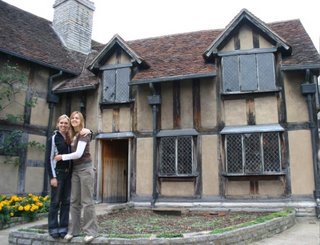
A complete change in mood – we briefly browsed around a small market along the riverfront, purchased a piece of fudge and a lavender pillow then searched for more of Shakespeares’s houses. Nash’s house was the first one we stumbled across. This was the site of the house Shakespeare purchased in 1597 to retire in and was the 2nd biggest house in Stratford at the time. However after it left the Shakespeare family the disgruntled new owner got annoyed by the public attention in the house and people asking to take cuttings from the tree in the yard that Shakespeare planted. So he cut the tree down, left town and ordered the destruction of the house. So all that remains now are the foundations and the adjacent house that Shakespeare’s granddaughter’s husband owned. This house was showing an exhibition on the published works of Shakespeare and included a copy that circulated Robben Island prison showing Nelson Mandela’s favourite passage that he had signed and dated. The house had another English landscaped garden with box hedges and flowers in full bloom. After laying in the lush green grass eating our ham and cheese rolls it was time for Jacinda to head back to London, leaving Warren and I to explore more Shakepeare houses.
Next up was Halls croft – his daughter Susanna’s house where she lived when married to the doctor John Hall. The house contained some of the doctors case notes and his cures, many of them sounding like witches potions. There was a small exhibition on the medical practises of the time, amputations without anaesthetic – I’m so glad I live in the 21st century!
Ann Hathaway’s cottage was a mile walk out of town and was probably the most interesting – possibly because there was a guide in every room telling you about the house rather than you straining to read a sign on the other side of the room. Ann was Shakespeare’s wife. Her family was quite well off from fruit trees and sold wool from the sheep they kept. The house still had
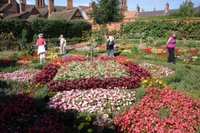
the bench where the couple were believed to have courted under supervision. He was 18 and she 26 and 3 months pregnant when they were married. I don’t know that the love in the marriage lasted long though as he disappeared off to London for a number of years and in his will left her his second best bed! We learnt the origins of a few more sayings here. ‘A square meal’ was due to the square wooden plates people had. You had one plate your whole life and when not in use it was stored on the shelf. If a lady hadn’t left home to marry, her plate remained and she was still ‘on the shelf.’ Another piece of useless but interesting information – to clean a chimney in the 16th century – tie a rope to a chicken and lower it down the chimney, it flaps it wings the whole way down and presto – your chimney is clean.(and you might even have a dead chicken to cook for dinner!)
Not really feeling up to a 5 mile walk to the farm at Mary Ardens, we tried unsuccessfully to find some means of getting there. So I didn’t get to visit the house of Shakespeare’s mother and Jacinda and I’s genealogical claim to fame (my maiden name is Ardern). So instead we thought we’d get some dinner and visit the oldest pub in Statford- the building dating back to the 16th century – but curiously it had the identical menu to yesterday’s Dirty Duck so we went to Subway instead.
Getting home involved a lot of waiting at train stations so to anybody wanting to do the same weekend agenda as us – stay in Stratford! Otherwise, it was a very informative and enjoyable weekend.
















